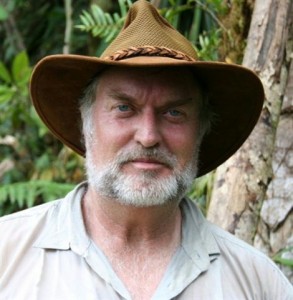With all the recent reports of apparent pterosaurs flying in North America, let’s turn aside for a moment and consider a small sampling of the amazing sightings of modern pterosaurs in the southwest Pacific. Some encounters are in Papua New Guinea, some in Australia, some over the sea; none of the sighting could reasonably be interpreted as coming from any misidentification of any flying fox fruit bat.
Scientific Analysis of Paul Nation’s Video
. . . Ropen lights (or indava lights) are not caused by fire, airplane lights, or meteors.” Analysis, by the physicist Clifford Paiva, regarding Paul Nation’s video footage of two indava lights observed near the top of a ridge deep inthe interior of the mainland of Papua New Guinea, late in 2006.
The guided missle cruiser USS Joett, years ago, had an encounter with what may have been a giant ropen one night, somewhere between the southwest Pacific and the Indian Ocean.
With a fellow cryptozoologist, some time ago, I interviewed a man who had been a sailor on the U.S.S. Jouett (guided missile cruiser), CG-29. He told us about the night when he was surprised by an excited shipmate who summoned him out of his bunk. Many sailors had just witnessed a giant “pterodactyl” that had flown directly over the ship.
. . . near the Dandenong Ranges about 25 [kilometers] east of Melbourne. . . . around the late 1990′s . . . I saw . . . something flying that appeared to be at the height of light planes that fly around here . . . This thing was at least as large as . . . say a Cesna. . . . lazily flapping it’s wings . . . It appeared to be lit up by the moonlight and shining as if it had no feathers. Very strange . . .
Giant Living Pterodactyl in New Guinea
Duane Hodgkinson . . . was stationed near Finschhafen, in what was then called New Guinea. After he and his buddy walked into a clearing, they were amazed as a large creature flew up into the air. The men soon realized that it was no bird that started to circle the clearing. It had a tail “at least ten to fifteen feet long,” (book Searching for Ropens, 2007) and a long appendage at the back of its head . . .
Jonathan David Whitcomb, a forensic videographer, interviewed Hodgkinson, in 2004, and found his testimony credible.



